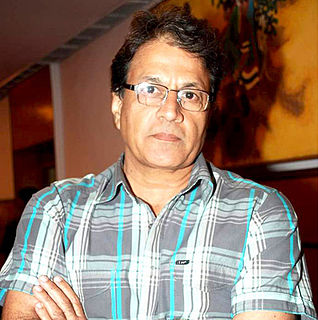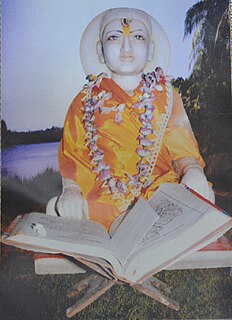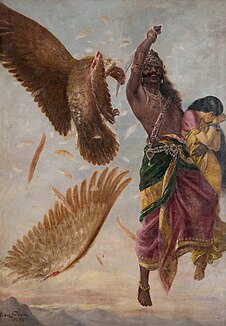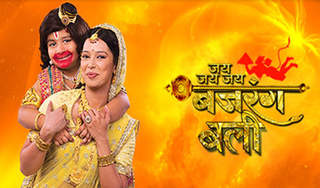This article needs additional citations for verification .(April 2014) (Learn how and when to remove this template message) |
| Ramayan | |
|---|---|
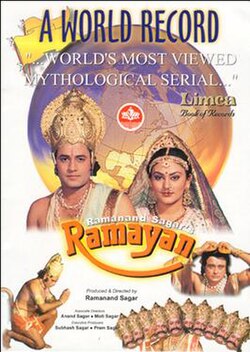 Ramayan promotional poster | |
| Created by | Ramanand Sagar |
| Starring | Arun Govil Deepika Chikhalia Sunil Lahri Sanjay Jog Arvind Trivedi Dara Singh Vijay Arora Sameer Rajda Mulraj Rajda Lalita Pawar |
| Composer(s) | Ravindra Jain Jaidev |
| Country of origin | India |
| Original language(s) | Hindi (primary) Awadhi (minor) |
| No. of episodes | 78 |
| Production | |
| Executive producer(s) | Subhash Sagar |
| Producer(s) | Ramanand Sagar Anand Sagar Moti Sagar |
| Production location(s) | Umbergaon, Gujarat |
| Cinematography | Prem Sagar |
| Editor(s) | Ravikant Nagaich |
| Camera setup | Digital movie camera |
| Running time | 35 minutes |
| Production company(s) | Sagar Art Enterprises |
| Release | |
| Original network | Doordarshan |
| Original release | 25 January 1987 – 31 July 1988 |
| Chronology | |
| Followed by | Luv Kush |
Ramayan is an Indian epic television series, which aired during 1987-1988, created, written, and directed by Ramanand Sagar. [1] The remake of Ramayan series was again presented by Sagar Arts and which aired on NDTV Imagine in 2008. Ramayan introduced the concept of Hindu mythology to Indian Television and went on to become a national classic, it was aired on Zee TV in mid-90's. Also, it was aired on Star Plus and Star Utsav in 2000's. [2] [3]
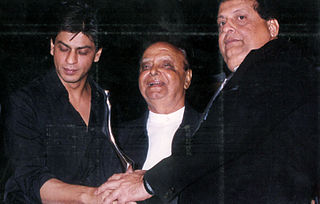
Ramanand Sagar was an Indian film director. He is most famous for making the Ramayan television series, a 78-part TV adaptation of the ancient Hindu epic of the same name, starring Arun Govil as Lord Ram and Deepika Chikhalia as Sita. This TV serial was then widely watched and liked across the country. It teaches the mankind holy and shrine values of life marking an indelible impression of the high ideals of heavenly culture to be imbibed for all mankind on this earth. The Government of India awarded him the civilian honour of Padma Shri in 2000.
Zee TV is an Indian pay television channel owned by Zee Entertainment Enterprises, a media and entertainment company based in Mumbai, Maharashtra. A part of the Essel Group, it started to broadcast on 2 October 1992 as the first Hindi-language subscription channel in India.

Star Utsav is an Indian pay television channel that primarily broadcasts Hindi-language programming. It was launched on 7 June 2004. Part of Star Plus's Star TV network in Asia, it is distributed worldwide by Star India,
Contents
It is a television adaptation of the ancient Indian Hindu mythological epic of the same name, and is primarily based on Valmiki's Ramayan and Tulsidas' Ramcharitmanas .[ citation needed ]
An epic is traditionally a genre of poetry, known as epic poetry. In modern terms, epic is often extended to describing other art forms, such as epic theatre, films, music, novels, television series, and video games, wherein the story has a theme of grandeur and heroism, just as in epic poetry. Scholars argue that the epic has long since become "disembedded" from its origins in oral poetry, appearing in successive narrative media throughout history.

Ramayana is one of the two major Sanskrit epics of ancient India, the other being the Mahābhārata. Along with the Mahābhārata, it forms the Hindu Itihasa.

Valmiki is celebrated as the harbinger-poet in Sanskrit literature. The epic Ramayana, dated variously from 5th century BCE to first century BCE, is attributed to him, based on the attribution in the text itself. He is revered as Ādi Kavi, the first poet, author of Ramayana, the first epic poem.
The serial was brought to the small screen by Sagar Art Enterprises. The list of technicians is as follows:
Screenplay & Dialogue - Ramanand Sagar; Special Effects - Ravikant Nagaich; Technical Advisor - Prem Sagar; Lyrics & Music - Ravindra Jain; Title Music - Jaidev; Executive Producer - Subhash Sagar; Second Unit Directors - Anand Sagar & Moti Sagar; Produced & Directed - Ramanand Sagar.
The series had a viewership of 82 per cent, a record high for any Indian television series. Each episode of the series reportedly earned Doordarshan ₹40 lakh. [4]
A lakh (; abbreviated L; sometimes written Lac or Lacs; Devanāgarī: लाख) is a unit in the Indian numbering system equal to one hundred thousand (100,000; scientific notation: 105). In the Indian convention of digit grouping, it is written as 1,00,000. For example, in India 150,000 rupees becomes 1.5 lakh rupees, written as ₹1,50,000 or INR 1,50,000.
